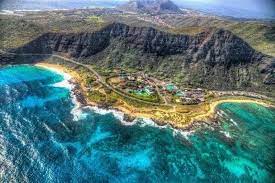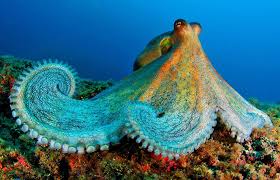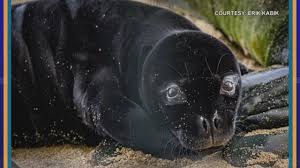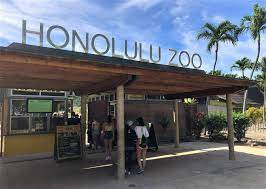
The Sealife Park Hawaii is a unique and exciting place to visit for anyone interested in marine life. Located on the beautiful island of Oahu, the park is home to a variety of aquatic species, including dolphins, sea turtles, fish, and more. Visitors can explore the park’s many interactive exhibits and learn about the different species that inhabit the waters off Hawaii’s coast.
The Sealife Park Hawaii offers something for everyone. From educational presentations and interactive exhibits to hands-on experiences with sea creatures, there’s something for everyone to enjoy. The park also features a variety of shows featuring dolphins and other marine animals that are sure to entertain visitors of all ages.
In addition to its exhibits and shows, the Sealife Park Hawaii also offers an array of activities for guests to enjoy. Snorkeling tours are available for those wanting to explore the underwater world up close. Visitors can also take part in kayaking or stand-up paddle boarding excursions around the park’s lagoon and nearby reefs. For those who prefer a more relaxed experience, there are glass-bottom boat tours that provide an amazing view of the coral reef below without getting wet!
The Sealife Park Hawaii is a great way to get up close and personal with some of Hawaii’s most incredible marine life. Whether you’re looking for an educational experience or simply want to have some fun in the sun, this unique destination has something for everyone!
The six advantages of Sealife Park Hawaii are:
- Get close to the majestic creatures of the sea in their natural habitat.
- Enjoy a variety of interactive activities, such as swimming with dolphins and feeding stingrays.
- Learn about conservation efforts to protect Hawaii’s ocean life and its fragile coral reefs.
- Explore underwater exhibits with vibrant fish, sharks, turtles, and more!
- Participate in educational programs designed to teach kids about marine life and ocean ecology.
- Experience breathtaking views of the Hawaiian coastline from a glass-bottom boat tour or snorkeling adventure!
The seven disadvantages of Sealife Park Hawaii.
- Unnatural habitat for the animals
- Risk of animal escape or injury
- Potential to spread disease among wildlife
- Stress on wildlife due to overcrowding and noise
- Interference with natural migration patterns of animals
- Damage to coral reefs caused by boat traffic, pollution and other human activities
- High cost of admission for visitors
Get close to the majestic creatures of the sea in their natural habitat.
The SeaLife Park Hawaii is an amazing place to get up close and personal with some of the most majestic creatures of the sea. Located on the beautiful island of Oahu, SeaLife Park is home to a wide variety of marine life from dolphins and sea lions, to sharks and rays. Visitors can enjoy a variety of interactive experiences with the animals, including swimming with dolphins and feeding stingrays.
The park also offers educational programs such as marine mammal shows, lectures, and presentations about conservation and ocean ecology. In addition, visitors can explore the various exhibits in the park that showcase different species of fish, reptiles, amphibians, and invertebrates.
At SeaLife Park Hawaii, you can get close to some of nature’s most amazing creatures in their natural habitat. Whether you’re looking for an educational experience or just want to have some fun in the sun with these majestic creatures, SeaLife Park has something for everyone!
Enjoy a variety of interactive activities, such as swimming with dolphins and feeding stingrays.
The Sealife Park Hawaii is a unique and exciting experience for visitors of all ages. With a variety of interactive activities, you can get up close and personal with some of the ocean’s most fascinating creatures. Whether you’re looking to swim with dolphins or feed stingrays, there is something for everyone to enjoy at Sealife Park Hawaii.
Swimming with dolphins is one of the most popular activities at the park. Guests can take part in an educational program that includes an opportunity to observe and interact with these intelligent creatures in their natural habitat. It’s a once-in-a-lifetime experience that visitors won’t soon forget!
Another popular activity is feeding stingrays. Guests can hand-feed these gentle giants from the safety of a floating platform, while learning about their natural behaviors and habitats from trained experts. It’s a great way to get up close and personal with these majestic creatures!
In addition to swimming with dolphins and feeding stingrays, there are also other interactive activities available at Sealife Park Hawaii. Visitors can take part in educational programs about marine life, explore underwater habitats, or even go on a guided tour of the park. No matter what your interests are, there is something for everyone to enjoy at this amazing facility!
Learn about conservation efforts to protect Hawaii’s ocean life and its fragile coral reefs.
The Hawaiian Islands are home to some of the most vibrant and diverse ocean life in the world. From majestic humpback whales to colorful tropical fish, Hawaii’s ocean life is an integral part of the state’s culture and economy. Unfortunately, this precious resource is under threat from a variety of sources, including climate change, overfishing, and pollution.
Fortunately, conservation efforts are underway to protect Hawaii’s ocean life and its fragile coral reefs. One such effort is the Sealife Park Hawaii program. This program works with local communities to promote sustainable fishing practices and other activities that help protect our oceans. Through educational programs and hands-on experiences, visitors to the park can learn about the importance of conservation and how they can help protect our oceans for generations to come.
The Sealife Park Hawaii also works with scientists and researchers to monitor ocean health, identify threats, and develop strategies for protecting our oceans. Through their research, they are able to provide valuable data that helps inform conservation efforts in Hawaii and beyond.
By visiting Sealife Park Hawaii you can learn about the importance of conservation efforts for protecting our oceans and coral reefs. You can also get involved by participating in one of their educational programs or volunteering at one of their events. By doing so you will be helping to ensure that future generations will be able to enjoy Hawaii’s ocean life for years to come.
Explore underwater exhibits with vibrant fish, sharks, turtles, and more!
Hawaii’s Sealife Park is a must-see destination for any ocean lover. Located in the heart of Honolulu, this aquarium offers up-close encounters with some of the world’s most fascinating sea creatures. From colorful fish and sharks to majestic turtles and more, visitors can explore the underwater exhibits and get an up-close look at these amazing creatures.
The park offers a variety of interactive experiences for visitors, such as touch pools where you can get an up-close look at starfish, sea urchins, and other sea life. You can also feed the fish in the feeding pool or take a guided tour with one of their experienced guides. The park also features educational programs that teach visitors about marine life conservation and ocean ecology.
For those looking for a unique experience, Sealife Park Hawaii also offers snorkeling tours that allow visitors to explore the reef and observe sea life from a different perspective. Whether you’re looking to learn more about marine life or just want to have a fun day out with friends and family, Sealife Park Hawaii has something for everyone.
Participate in educational programs designed to teach kids about marine life and ocean ecology.
Sea Life Park Hawaii is an educational and entertaining destination for families. Located on the beautiful island of Oahu, Sea Life Park offers a variety of educational programs designed to teach kids about marine life and ocean ecology. With interactive exhibits, hands-on activities, and educational presentations, kids can learn all about the fascinating creatures that inhabit our oceans.
For example, kids can explore the shallow-water touch pool to learn about different species of fish and invertebrates. They can also take part in a behind-the-scenes tour of the park’s aquariums to get an up-close look at some of the park’s most interesting inhabitants. Additionally, they can join in on a guided tour of the coral reef system to gain insight into how this delicate ecosystem works.
Beyond these activities, Sea Life Park also offers educational workshops for school groups and summer camps. These programs are designed to help kids develop an appreciation for ocean life and understand how our actions affect it. Whether it’s learning about conservation efforts or participating in a beach cleanup, these programs provide valuable lessons that will stay with them for years to come.
Overall, Sea Life Park Hawaii is an ideal destination for families looking for an educational experience that’s both fun and informative. With its interactive exhibits and hands-on activities, kids will come away with a greater understanding of marine life and ocean ecology – making Sea Life Park Hawaii a must-visit destination for any family looking to explore the wonders of our underwater world!
Experience breathtaking views of the Hawaiian coastline from a glass-bottom boat tour or snorkeling adventure!
Experience the beauty of Hawaii’s stunning coastline from a glass-bottom boat tour or snorkeling adventure at SeaLife Park Hawaii. Located on Oahu’s south shore, this marine park offers visitors a unique opportunity to view the underwater world in all its glory. From the comfort of a glass-bottom boat, you can observe colorful coral reefs, vibrant sea life, and majestic sea turtles up close. If you’re feeling adventurous, take a plunge into the crystal-clear waters and explore the depths with a snorkeling tour.
SeaLife Park Hawaii is dedicated to educating visitors about the importance of marine conservation. During your visit, you can learn about Hawaiian culture and wildlife through interactive exhibits and informative talks by knowledgeable guides. The park also offers educational programs for children and adults alike that focus on ocean awareness and environmental stewardship.
Whether you’re looking for an educational experience or just want to enjoy breathtaking views of Hawaii’s coastline, SeaLife Park Hawaii has something for everyone!
Unnatural habitat for the animals
The Sealife Park Hawaii is a popular tourist destination in the Hawaiian Islands, but it has come under fire for its unnatural habitat for the animals. The park is home to a variety of marine life, including dolphins, seals, sea lions and sharks. However, the park confines these animals in artificial habitats that are much smaller than their natural environments. This can cause stress and discomfort for the animals and can even lead to health problems. The unnatural conditions also limit their ability to engage in natural behaviors such as swimming and socializing with other species.
The unnatural habitat of the Sealife Park Hawaii has also been criticized for its lack of enrichment activities for the animals. In a natural environment, animals are able to explore their surroundings and interact with different stimuli. This type of enrichment is not available in the park, leaving the animals bored and frustrated.
The Sealife Park Hawaii has been accused of exploiting these animals by using them as entertainment for visitors. While there are educational programs available at the park, many people argue that these programs do not provide enough information about animal welfare or conservation efforts.
Although there are some positive aspects to visiting this park, it is important to be aware of its shortcomings when it comes to providing an appropriate environment for its inhabitants. Animals should never be confined in an unnatural habitat if it can cause them harm or distress.
Risk of animal escape or injury
The Sea Life Park Hawaii is a popular attraction for visitors to the Hawaiian Islands. However, there is an inherent risk of animal escape or injury associated with these types of parks.
Animals can escape from their enclosures if they are not properly secured, or if they are not given adequate space to roam and explore. In addition, animals can be injured by careless visitors who do not follow the rules and regulations of the park. For example, visitors may try to feed the animals, or touch them without permission, which can cause stress and injury to the animals.
The Sea Life Park Hawaii has taken steps to ensure that these risks are minimized. All enclosures are regularly inspected and maintained to prevent potential escapes. The park also has strict rules in place regarding visitor behavior around the animals. Visitors must stay a safe distance away from the animals at all times and must not attempt to feed them or touch them without permission from staff members.
Despite these precautions, it is important for visitors to remember that there is always a risk of animal escape or injury when visiting any animal park. Visitors should remain vigilant and adhere to all safety guidelines while at Sea Life Park Hawaii in order to ensure a safe and enjoyable experience for both themselves and the animals.
Potential to spread disease among wildlife
The Sealife Park Hawaii is a popular tourist destination for its unique aquatic wildlife. However, there is a potential risk of disease spreading among the wildlife due to the close proximity of humans and animals.
Diseases can be spread between humans and animals, as well as between different species of animals, when they come into contact with each other. This can lead to serious health problems for both the humans and the wildlife. For example, if a human contracts an illness from an animal, it could be passed on to other humans or even other animals. Additionally, if one animal contracts an illness from another animal, it could spread quickly throughout the park’s population.
In order to reduce this potential risk, Sealife Park Hawaii has implemented several safety measures. All visitors are required to wash their hands before entering any exhibit area and are encouraged to avoid direct contact with any of the animals. Additionally, all staff members must wear protective equipment such as gloves and face masks when handling any of the wildlife in order to prevent any potential illnesses from spreading.
Although these safety measures help reduce the risk of disease spreading among wildlife at Sealife Park Hawaii, it is still important for visitors to take extra precautions when visiting the park. By following these simple steps, visitors can help protect both themselves and the wildlife from any potential illnesses that may be present at the park.
Stress on wildlife due to overcrowding and noise
The Sealife Park in Hawaii is a popular tourist attraction, but it has come under scrutiny recently due to the stress it can cause on wildlife. Overcrowding and noise can be detrimental to the health and wellbeing of animals living in the park.
The park is home to a variety of marine life, including dolphins, sea turtles, and fish. These animals are naturally very sensitive to their environment, and overcrowding can lead to increased levels of stress hormones in their bodies. This can lead to behavioral changes that can be harmful to both the animals and visitors alike.
In addition, loud noises from visitors or other park attractions can cause distress for the animals. This is especially true for dolphins, which rely on sound for communication and navigation. Loud noises can disrupt their ability to communicate with one another and navigate their environment.
To help reduce the stress on wildlife at Sealife Park Hawaii, park officials have implemented a number of measures such as limiting visitor numbers, increasing educational programs about animal welfare, and providing more natural habitats for the animals. They are also working on reducing noise levels by installing sound-proof barriers around certain areas of the park.
By taking these steps, Sealife Park Hawaii is helping to ensure that its wildlife remains healthy and safe while still providing an enjoyable experience for visitors.
Interference with natural migration patterns of animals
The Sealife Park Hawaii is a popular tourist attraction, but it has come under scrutiny due to its potential interference with the natural migration patterns of animals. The park is home to a variety of marine life, including dolphins, sea turtles, and other fish species. While these animals are able to thrive in the park’s environment, they may be prevented from migrating naturally due to the presence of human-made barriers.
The park’s large size and walls can make it difficult for animals to move freely between different areas of the ocean. This can interfere with their natural migratory patterns and prevent them from reaching important feeding grounds or mating sites. Additionally, the presence of humans in the area can cause stress for some species and disrupt their normal behaviors.
To reduce the impact on wildlife, Sealife Park Hawaii has implemented several conservation measures such as increasing public awareness about marine life conservation and reducing water pollution. They have also increased their efforts to monitor animal movements and behavior within the park boundaries. However, there is still more that needs to be done in order to ensure that these animals are able to migrate without interference from human activities.
Damage to coral reefs caused by boat traffic, pollution and other human activities
The coral reefs of Sealife Park Hawaii are facing a serious threat due to the damage caused by human activities. Boat traffic, pollution and other human activities have been damaging the coral reefs in this area for some time now. This has caused a major decline in the health of the coral reefs, which are essential to marine life and tourism.
The effects of boat traffic on coral reefs can be devastating. Boats can cause physical damage to the reef by dragging anchors or running into it with their propellers. Pollution from boats can also cause serious damage to coral reefs by introducing chemicals like oil, gasoline and sewage into the water. These chemicals can disrupt the delicate balance of life in a coral reef and lead to its death.
Other human activities such as overfishing, coastal development and climate change are also contributing to the destruction of Sealife Park Hawaii’s coral reefs. Overfishing removes large amounts of fish from an area, leaving fewer resources for other species that rely on them for food or shelter. Coastal development destroys habitat for many species living in these areas, while climate change can lead to increased temperatures and ocean acidification which further damages these fragile ecosystems.
It is important that we take steps to protect these precious ecosystems before it is too late. We must reduce boat traffic, regulate fishing practices and reduce pollution in order to protect Sealife Park Hawaii’s coral reefs from further damage. By taking action now we can ensure that future generations will be able to enjoy these amazing underwater wonders for years to come.
High cost of admission for visitors
Visiting the Sealife Park Hawaii can be a great way to experience the beauty and diversity of marine life, but it comes with a hefty price tag. The cost of admission for visitors is quite high, making it difficult for many people to enjoy this unique experience.
The admission fee covers the cost of the park’s staff and resources, as well as maintenance costs. It also helps to pay for educational programs and other activities that are offered at the park. While these are all important aspects of running a successful business, some visitors may find that the cost is too high for their budget.
Fortunately, there are ways to save money when visiting Sealife Park Hawaii. Many hotels offer discounts on tickets, and group rates are also available. Additionally, some attractions may offer special discounts for children or seniors. It’s always worth checking with local businesses or organizations to see if they have any deals or discounts available.
Overall, visiting Sealife Park Hawaii can be an enjoyable experience for all ages, but it does come with a high price tag. With some research and planning ahead of time, however, visitors can still enjoy this amazing experience without breaking the bank.



